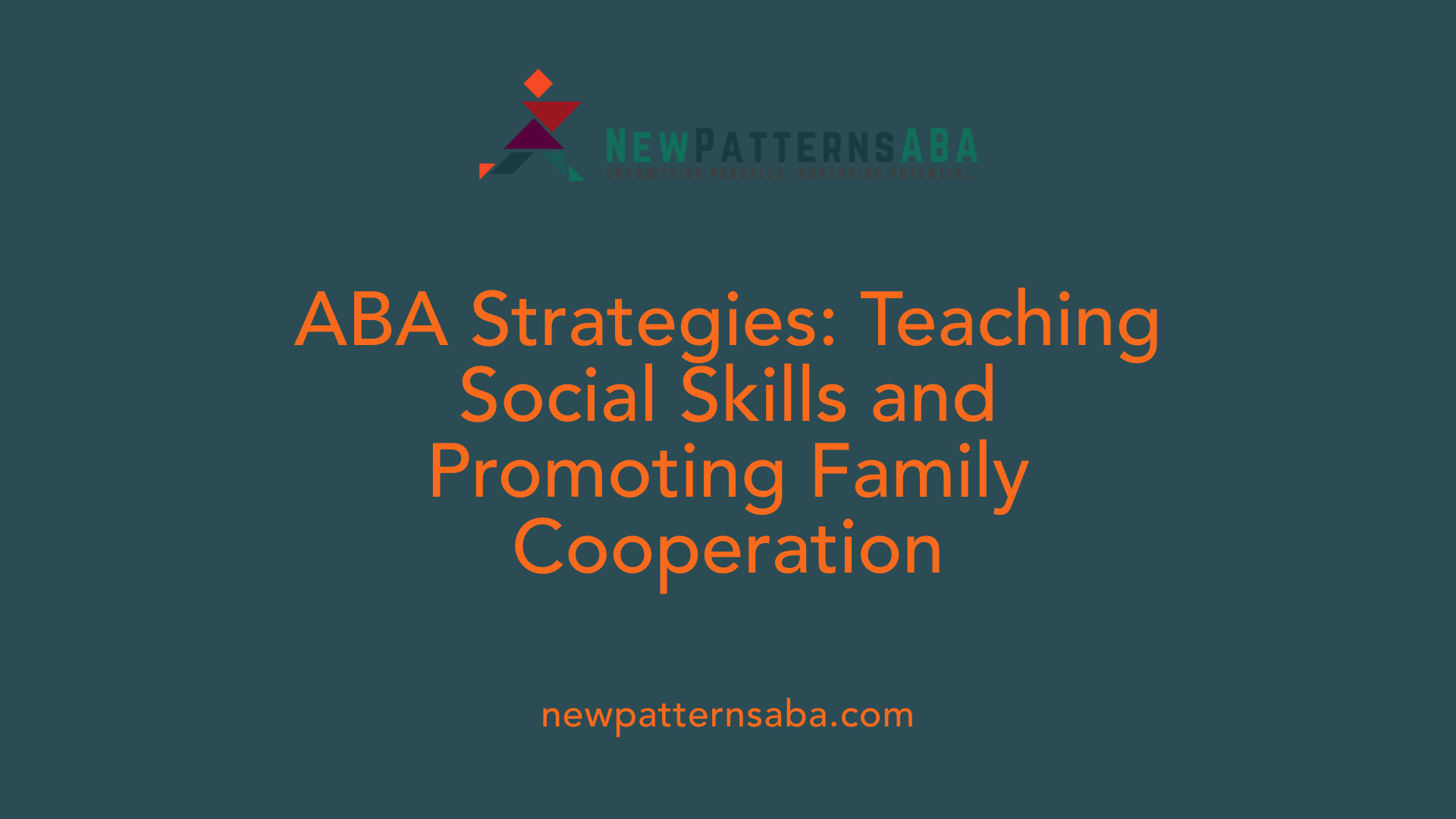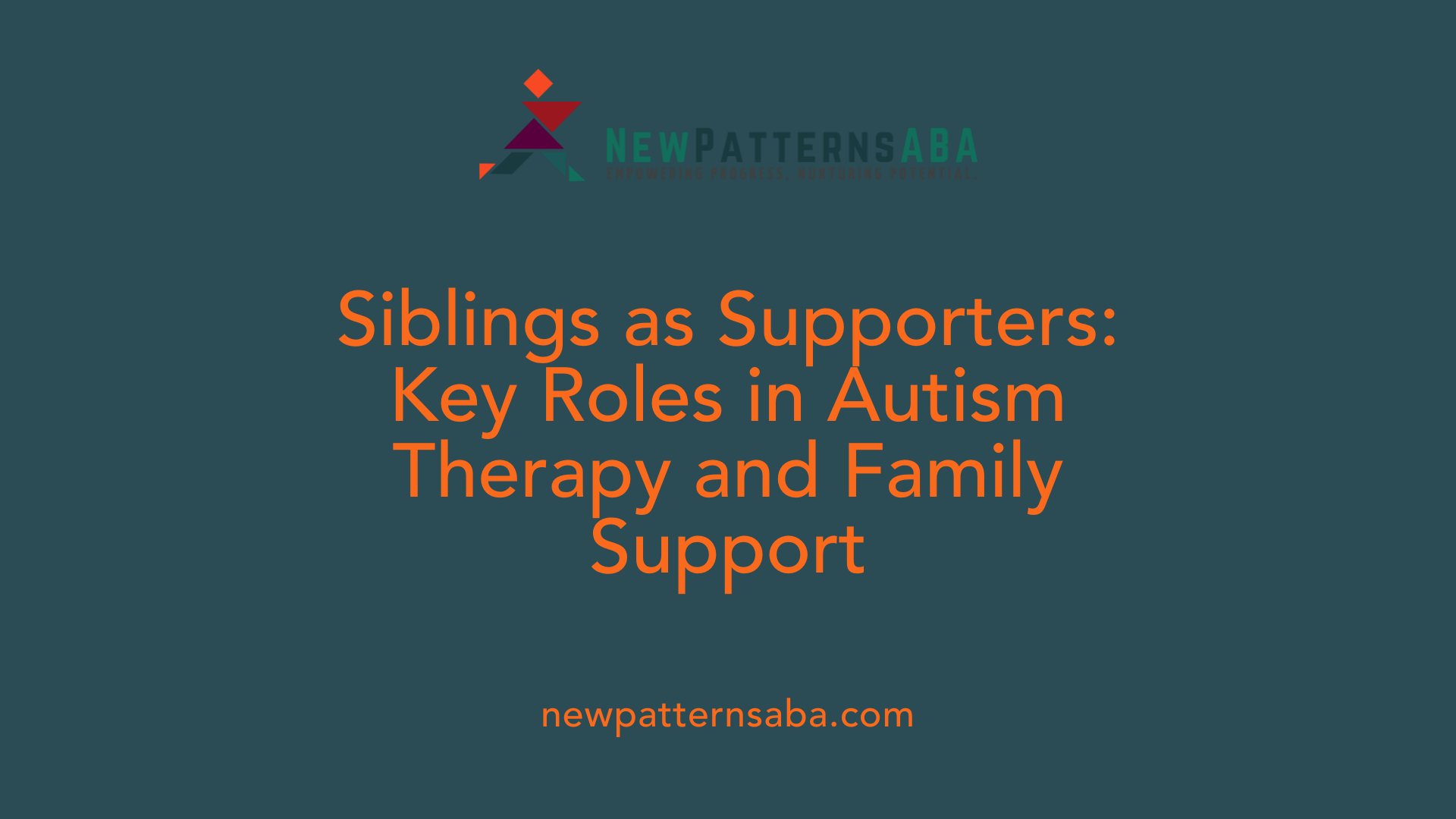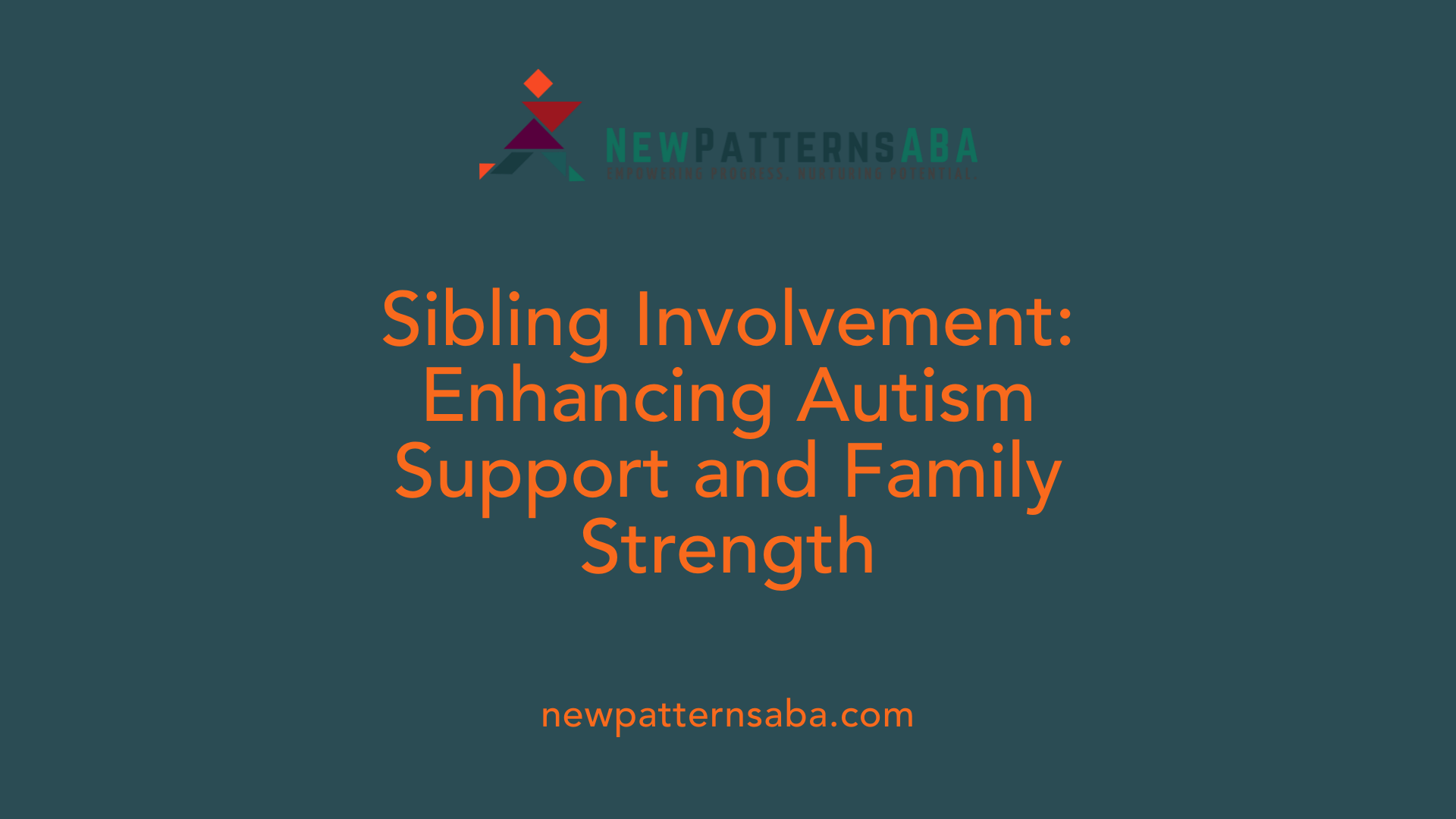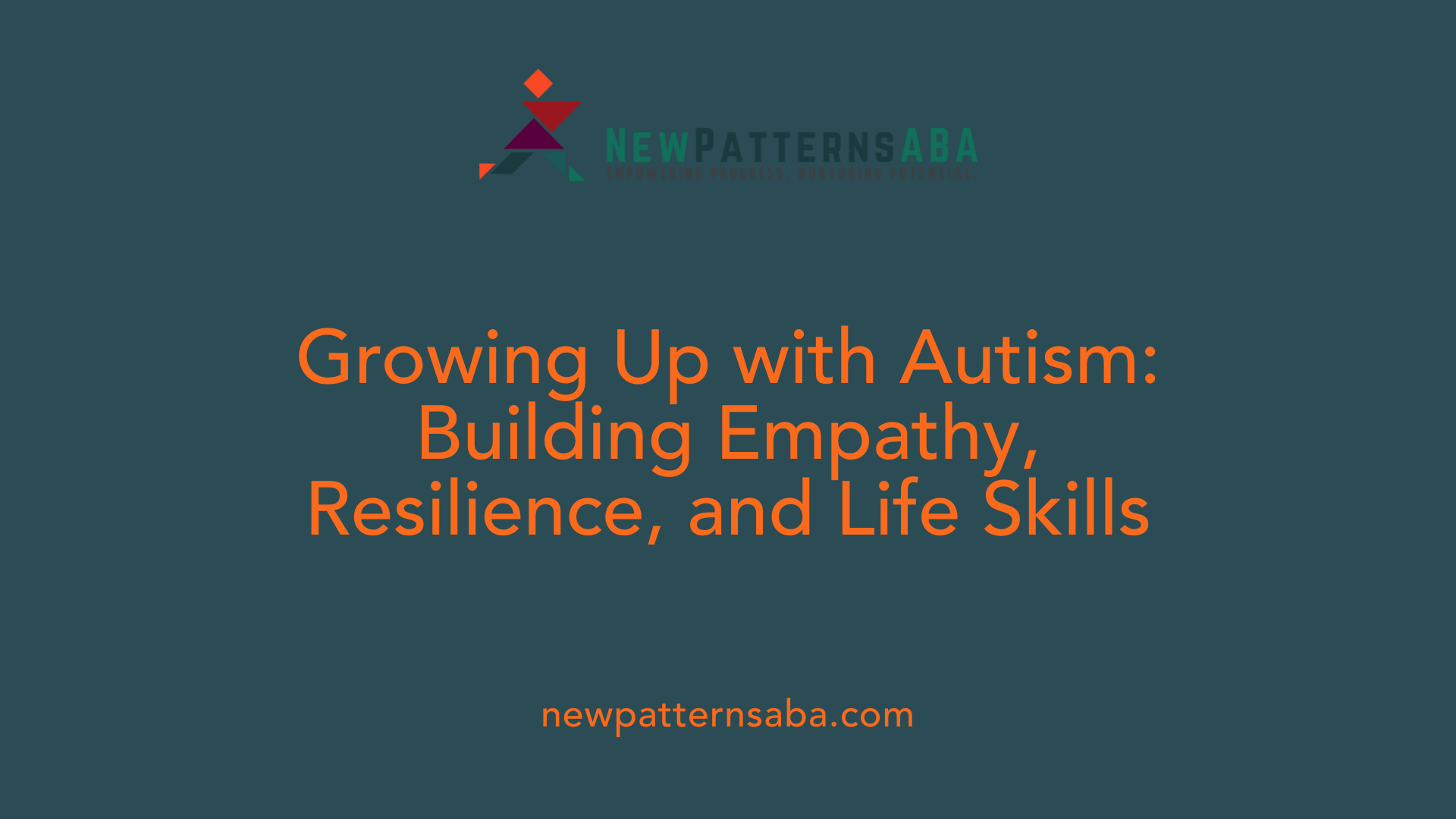Building Bonds: The Power of ABA in Supporting Sibling Relationships
Understanding the Role of ABA in Enhancing Sibling Dynamics
Applied Behavior Analysis (ABA) therapy, widely recognized for its effectiveness in supporting children with autism, also plays a crucial role in strengthening sibling relationships within families. By fostering understanding, communication, and shared experiences, ABA promotes a nurturing environment where siblings can develop empathy, patience, and cooperation. This comprehensive approach goes beyond individual skill development, emphasizing the importance of family cohesion and emotional support in creating a harmonious household.
The Influence of ABA Therapy on Sibling Relationships
How does ABA therapy influence sibling relationships?
ABA therapy significantly enhances sibling bonds by fostering mutual understanding and effective communication. When siblings are included in therapy sessions, they gain insight into autism and the individual needs of their brother or sister, which leads to greater empathy and acceptance. Educating siblings about autism through books, videos, or support groups helps close knowledge gaps and encourages supportive behaviors.
Involving siblings in shared activities and therapy goals enables them to practice social skills in a familiar environment. They can serve as role models by reinforcing positive behaviors and demonstrating patience, cooperation, and sharing. These actions foster a nurturing atmosphere where both individual growth and family harmony can flourish.
Moreover, ABA principles advocate for routines, boundaries, and open dialogue. This creates a structured yet flexible environment that facilitates healthy sibling interactions. Over time, siblings often develop qualities like resilience, patience, and empathy—traits that benefit their personal development and strengthen family dynamics.
By promoting these elements, ABA therapy does more than support the individual with autism; it also builds stronger, more understanding sibling relationships that are vital for a cohesive family unit.
Strategies for Encouraging Positive Sibling Interactions
What strategies does ABA use to encourage positive sibling interactions?
ABA therapy incorporates various approaches to foster healthy relationships between siblings. One effective method involves teaching social skills like sharing, patience, and effective communication. Visual aids such as social stories and emotion charts are commonly used to help siblings understand and manage feelings, promoting empathy and cooperation.
Reinforcement plays a significant role. When siblings display positive behaviors, they are encouraged through praise or tangible rewards like tokens, which motivate continued positive interactions.
Modeling appropriate behaviors is also essential. Siblings learn by observing how others act and respond within family settings. Clear boundaries and consistent reinforcement systems help establish expectations, ensuring everyone understands acceptable behaviors.
Involving siblings directly in therapy sessions and family activities further strengthens bonds. This shared participation builds empathy, fosters understanding, and aligns family members towards common goals.
Finally, promoting open communication and developing emotional intelligence improve sibling relationships. Creating an environment where feelings and concerns can be expressed safely reduces misunderstandings and conflicts. Overall, these strategies contribute to a nurturing environment where siblings support each other's growth and well-being.
Methods Used in ABA to Enhance Sibling Relationships

What methods are used by ABA to enhance sibling relationships?
Applied Behavior Analysis (ABA) employs several strategies to foster stronger sibling bonds within families. One foundational approach is education about autism, helping siblings understand typical traits and challenges faced by their autistic brother or sister. This knowledge reduces misconceptions and encourages empathy.
Siblings are also engaged through open and age-appropriate communication, which creates a safe space for questions and emotional expression. Families often facilitate shared experiences, like joint activities or play, to strengthen connections and build social skills in real-life contexts.
Active involvement of siblings in therapy sessions serves as both support and learning opportunity. They can act as role models, reinforce positive behaviors, and develop greater emotional understanding.
Creating sensory-friendly environments, including sensory diets and coping strategies, helps reduce stress for all children, enhancing overall family harmony. These environments support siblings in dealing with sensory sensitivities and promote inclusion.
Together, these methods build a resilient, supportive family dynamic where siblings feel valued and understood. They also encourage viewing therapy as a family effort, promoting empathy, social skill development, and a nurturing environment conducive to growth.
The Role of Siblings in ABA Therapy for Autism Families

What is the role of siblings in ABA therapy for families with autism?
Siblings are vital members of the autism support system within a family. They often participate in social skills training by engaging in shared activities, role-playing, and practicing communication strategies learned through ABA therapy. By doing so, siblings help reinforce positive behaviors in their brother or sister at home, creating a consistent learning environment.
During therapy sessions, siblings can be involved directly, which promotes a better understanding of the therapy goals and techniques. This inclusion fosters empathy and helps siblings see themselves as active contributors to their sibling’s development.
Siblings also serve as positive role models by demonstrating social interactions like sharing, turn-taking, and emotional regulation. These modeled behaviors can be mimicked outside sessions, aiding in the generalization of skills to daily life.
Addressing emotional well-being is an important aspect of involving siblings. They might experience feelings such as jealousy, pride, frustration, or confusion. Encouraging open discussions about these emotions and validating their experiences help maintain a healthy sibling relationship.
Creating an inclusive environment involves balancing attention, recognizing each child's strengths, and involving siblings in decision-making processes related to their brother or sister’s needs. This balanced approach nurtures understanding, patience, and emotional support.
Active sibling involvement enhances the overall effectiveness of ABA therapy and promotes a loving, cohesive family environment. It fosters social growth, strengthens family bonds, and nurtures empathy among all family members.
How can involving siblings improve therapy outcomes?
Involving siblings in therapy settings can lead to better social skills transfer, increased family unity, and reduced stigma related to autism. Families adopting such strategies often find that siblings become advocates and emotional supporters, helping their autistic brother or sister navigate daily challenges.
By fostering shared experiences and understanding through education, shared activities, and ongoing communication, siblings help reinforce the behaviors and skills that ABA therapy aims to develop. This holistic family involvement creates a nurturing environment where each member understands their role, leading to more positive and lasting outcomes.
Promoting Healthy Sibling Dynamics Through Educators and Therapists
How can educators promote healthy sibling dynamics when using ABA?
Educators and therapists play a crucial role in fostering positive sibling relationships within the context of ABA therapy. One effective strategy is to teach communication skills tailored to the developmental levels of siblings. This helps promote understanding and reduces frustrations that can arise in family interactions.
Facilitating shared activities encourages siblings to practice social skills, cooperation, and empathy in a natural, enjoyable setting. These activities can include games, role-playing, or joint projects that are developmentally appropriate and engaging.
Involving siblings directly in therapy sessions allows them to observe and participate in interventions. Educating them about ABA strategies and their sibling’s specific condition helps bridge knowledge gaps. It also empowers siblings to support their brother or sister through reinforcement and modeling of positive behaviors.
Open conversations about autism and the individual needs of the child help dispel myths and foster a climate of acceptance and empathy. Siblings who understand autism are more likely to develop compassionate attitudes and supportive behaviors.
Moreover, siblings can serve as peer models, demonstrating appropriate social and communication behaviors. Their involvement in reinforcement activities not only benefits the autistic child but also nurtures stronger sibling bonds.
Supporting emotional needs is essential. Recognizing each sibling's strengths, providing individual attention, and encouraging structured shared experiences create a nurturing environment. This approach promotes family unity, emotional resilience, and an inclusive atmosphere that benefits all members.
Benefits of Siblings' Involvement in ABA-Based Interventions

What are the benefits of involving siblings in ABA-based interventions?
Involving siblings in ABA therapy offers a range of positive outcomes for the entire family. Siblings can act as natural supporters, reinforcing behaviors and skills learned during therapy in everyday situations. Their participation fosters empathy and understanding about autism, helping reduce confusion or frustration siblings might feel.
Shared activities involving siblings create opportunities for social learning and emotional connection. This involvement also helps diminish feelings of social isolation or neglect that neurotypical siblings may experience when family attention is focused on the child with autism.
By actively participating in therapy sessions or supporting goal-setting, siblings learn to appreciate their autistic brother or sister’s strengths. They become key players in creating a supportive environment, which benefits both the child undergoing therapy and the family as a whole.
Encouraging sibling participation enhances the therapy’s impact while promoting emotional well-being across the family. It fosters inclusive familial bonds, reduces stigma, and nurtures a sense of shared purpose. Ultimately, involving siblings in ABA interventions helps develop stronger family dynamics and a more understanding, supportive home environment.
Long-term Outcomes of Siblings Growing Up with an Autistic Sibling

What are the long-term effects of growing up with an autistic sibling?
Growing up alongside an autistic sibling can have profound and lasting impacts. Many neurotypical siblings develop qualities such as patience, resilience, and empathy as they navigate the challenges and joys of their family dynamics.
These siblings often become more emotionally mature and skilled in social interactions, which can benefit them in personal and professional settings. Their experiences foster a strong sense of family cohesiveness, as they learn to support their sibling’s needs while maintaining their own emotional well-being.
Moreover, many of these siblings develop an interest in careers related to autism support, education, or healthcare, driven by their firsthand understanding and compassion. Their unique perspective and skills often lead them to pursue meaningful roles that contribute positively to their communities.
In essence, growing up with an autistic sibling nurtures qualities like empathy, patience, and emotional understanding. These life skills not only strengthen family bonds but also lay a foundation for personal growth and future successes.
Supporting Emotional Well-being and Family Harmony

How does addressing sibling relationship dynamics, including feelings of burden or pride, support a healthy family?
Focusing on sibling relationship dynamics plays a vital role in nurturing a supportive family environment. When families openly discuss feelings of burden, pride, or frustration, they foster understanding and emotional closeness. Creating a safe space for emotional expression allows siblings to share their thoughts without judgment, helping to clear misunderstandings and reduce negative emotions.
Celebrating each child's strengths and accomplishments further promotes a positive atmosphere. Recognizing the individual achievements of all children helps them feel valued, boosting confidence and reinforcing family bonds.
Equally important is balancing attention among children. Providing equal opportunities for love and support prevents feelings of neglect or resentment, which can strain sibling relationships.
Seeking support outside the family through services like ABA family therapy or sibling groups offers a crucial outlet. These spaces enable families to share experiences, learn new strategies, and navigate challenges effectively.
By addressing these aspects, families can build a resilient, compassionate, and harmonious environment where each member feels understood, supported, and valued.
Fostering Family Unity Through ABA Techniques
In summary, ABA therapy extends its benefits beyond individual skill development to cultivate stronger, healthier sibling and family relationships. By implementing strategies like education, shared activities, and open communication, families can create a nurturing environment that promotes empathy, patience, and cooperation. The active involvement of siblings in therapy fosters understanding and reduces emotional burdens, contributing to long-term familial harmony. As families grow and adapt, ongoing support and a family-centered approach ensure that every member feels valued and understood, ultimately leading to a more cohesive and resilient family unit.
References
- ABA Therapy Near me: Supporting Siblings in Treatment
- ABA Family Therapy: Nurturing Positive Relationships in Autism ...
- Supporting Siblings of Children in ABA Therapy - Therapyland
- Supporting Sibling Relationships with ABA Therapy
- Sibling Support: Involving Brothers and Sisters in ABA Therapy
- ABA Family Therapy: Nurturing Positive Relationships in Autism ...
- The Impact of ABA on Families - Prospera Healthcare






